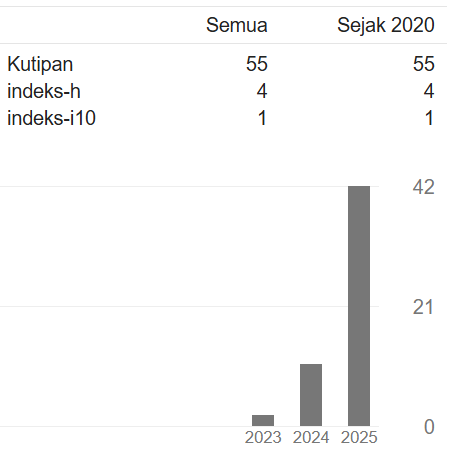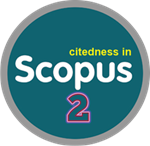Exploring How User-Generated Content and Micro-Influencers Shape Buying Behavioral Intention
Abstract
Purpose: This study investigates how the buying behavioral intention of Generation X and Baby Boomers is influenced by the user-generated content (UGC) and micro-influencer endorsements. It addresses a gap in existing literature that usually focuses on younger demographics, aiming to understand how older consumers, especially for aged 35 and above, engage with social media marketing exposure.
Method: A quantitative explanatory research design was employed, using a structured online survey distributed among Indian consumers aged 35 and above. The study adapted validated scales to measure UGC, micro-influencer credibility, and purchase intention. Data were analyzed using Partial Least Squares Structural Equation Modeling (PLS-SEM) to assess reliability, validity, and the strength of hypothesized relationships.
Findings: The results reveal that both UGC and micro-influencer exposure significantly shape buying behavioral intentions among older consumers. Peer-generated content fosters trust and credibility, while micro-influencers—due to their relatability and authenticity—effectively influence purchase decisions. These findings challenge assumptions about digital disengagement among older age groups.
Implication: Marketers should consider integrating UGC and collaborating with micro-influencers whose values align with older consumers. Tailored campaigns that emphasize clarity, credibility, and emotional resonance can enhance engagement and drive purchase behavior in this demographic. The study offers actionable insights for inclusive and age-sensitive digital marketing strategies.
Originality: This research extends the applicability of social media marketing constructs to older consumer segments, offering an understanding of their decision-making processes. By focusing on Generation X and Baby Boomers, it contributes to a more comprehensive and representative view of consumer behavior in the digital age.
Downloads
References
Berthon, P. R., Pitt, L. F., & Campbell, C. (2008). Ad lib: When customers create the ad. California Management Review, 50(4), 6–30. https://doi.org/10.2307/41166454
Bigne, E., Simonetti, A., Ruiz, C., & Kakaria, S. (2021). How online advertising competes with user-generated content in TripAdvisor. A neuroscientific approach. Journal of Business Research, 123, 279-288. https://doi.org/10.1016/j.jbusres.2020.10.010
Bolton, R. N., Parasuraman, A., Hoefnagels, A., Migchels, N., Kabadayi, S., Gruber, T., Loureiro, Y. K., & Solnet, D. (2013). Understanding Generation Y and their use of social media: A review and research agenda. Journal of Service Management, 24(3), 245–267. https://doi.org/10.1108/09564231311326987
Carstensen, L. L. (2006). The influence of a sense of time on human development. Science, 312(5782), 1913–1915. https://doi.org/10.1126/science.1127488
Casaló, L. V., Flavián, C., & Ibáñez-Sánchez, S. (2020). Influencers on Instagram: Antecedents and consequences of opinion leadership. Journal of Business Research, 117, 510–519. https://doi.org/10.1016/j.jbusres.2018.07.005
Christodoulides, G., Jevons, C., & Bonhomme, J. (2012). Memo to marketers: Quantitative evidence for change. Journal of Advertising Research, 52(1), 53–64. https://doi.org/10.2501/JAR-52-1-053-064
Chu, S. C., & Kim, Y. (2011). Determinants of consumer engagement in electronic word-of-mouth (eWOM) in social networking sites. International Journal of Advertising, 30(1), 47–75. https://doi.org/10.2501/IJA-30-1-047-075
De Veirman, M., Cauberghe, V., & Hudders, L. (2017). Marketing through Instagram influencers: The impact of number of followers and product divergence on brand attitude. International Journal of Advertising, 36(5), 798–828. https://doi.org/10.1080/02650487.2017.1348035
Dzreke, S. S., & Dzreke, S. (2025). Influence of Social Media on Consumer Behavior: Investigating How Social Media Platforms Shape Consumer Purchasing Decisions and Loyalty. Open Journal of Business and Management, 13, 1154-1175. https://doi.org/10.4236/ojbm.2025.132061
Evans, N. J., Phua, J., Lim, J., & Jun, H. (2017). Disclosing Instagram influencer advertising: The effects of disclosure language on advertising recognition, attitudes, and behavioral intent. Journal of Interactive Advertising, 17(2), 138-149. https://doi.org/10.1080/15252019.2017.1366885.
Fornell, C., & Larcker, D. F. (1981). Evaluating structural equation models with unobtrusive variables and measurement error. Journal of Marketing Research, 18(1), 39-50. https://doi.org/10.2307/3151312
Freberg, K., Graham, K., McGaughey, K., & Freberg, L. A. (2011). Who are the social media influencers? A study of public perceptions of personality. Public Relations Review, 37(1), 90–92. https://doi.org/10.1016/j.pubrev.2010.11.001
Gerlich, M. (2023). The Power of Personal Connections in Micro-Influencer Marketing: A Study on Consumer Behaviour and the Impact of Micro-Influencers. Transnational Marketing Journal, 11(1), 131-152. https://ssrn.com/abstract=4455093
Hair, J. F., & Alamer, A. (2022). Partial Least Squares Structural Equation Modeling (PLS-SEM) in second language and education research: Guidelines using an applied example. Research Methods in Applied Linguistics, 1(3), 1151-1170. https://doi.org/10.1016/j.rmal.2022.100027
Hair, J. F., Black, W. C., Babin, B. J., & Anderson, R. E. (2014). Multivariate Data Analysis (7th ed.). Pearson Education Limited.
Hair, J. F., Hult, G. T. M., Ringle, C. M., & Sarstedt, M. (2019). A Primer on Partial Least Squares Structural Equation Modeling (PLS-SEM) (2nd ed.). Sage Publications.
Hair, J. F., Ringle, C. M., & Sarstedt, M. (2011). PLS-SEM: Indeed a Silver Bullet. Journal of Marketing Theory and Practice, 19(2), 139-152. https://doi.org/10.2753/MTP1069-6679190202
Hennig-Thurau, T., Gwinner, K. P., Walsh, G., & Gremler, D. D. (2004). Electronic word-of-mouth via consumer-opinion platforms: what motivates consumers to articulate themselves on the internet? Journal of interactive marketing, 18(1), 38-52. https://doi.org/10.1002/dir.10073
Henseler, J., Ringle, C. M., & Sinkovics, R. R. (2009). The use of partial least squares path modeling in international marketing. Advances in international marketing, 20(1), 277-320. https://doi.org/10.1108/S1474-7979(2009)0000020014
Hofstede, G. (2001). Culture's consequences: Comparing values, behaviors, institutions and organizations across nations (2nd ed.). Sage Publications.
Hu, J., Sidek, S., Abd Rahman, A., & Yusof, R. N. R. (2024). Navigating influence: unraveling the impact of micro-influencer attributes on consumer choices in the Chinese social media. http://dx.doi.org/10.21511/im.20(2).2024.13
Lakho, A., Zulfiqar, S., Adnan, M., Haq, F. U., & Nizam, K. (2022). A Study on Impact of Facebook Brand-Related User Generated Content (UGC) On Consumer Responses. Bulletin of Business and Economics (BBE), 11(3), 1-15. https://bbejournal.com/index.php/BBE/article/view/399/321
Liu, G. H. W., Li, Y., & Lee, N. C. A. (2021). Size does matter: How do micro-influencers impact follower purchase intention on social media? In Proceedings of the International Conference on Electronic Business (Vol. 21, pp. 402–412). ICEB’21, Nanjing, China, December 3–7, 2021. https://aisel.aisnet.org/iceb2021/1/
Lou, C., & Yuan, S. (2019). Influencer marketing: How message value and credibility affect consumer trust and purchase intention. Journal of Interactive Advertising, 19(1), 58–73. https://doi.org/10.1080/15252019.2018.1533501
Moran, G., & Muzellec, L. (2017). eWOM credibility on social networking sites: A contextual approach. Journal of Marketing Communications, 23(2), 149–161. https://doi.org/10.1080/13527266.2014.969756
Nuzulita N, & Subriadi AP. (2020). The role of risk-benefit and privacy analysis to understand different uses of social media by Generations X, Y, and Z in Indonesia. E J Info Sys Dev Countries. 2020; 86: e12122. https://doi.org/10.1002/isd2.12122
Nguyen, M. H., Gruber, J., Fuchs, J., Marler, W., Hunsaker, A., & Hargittai, E. (2022). Older adults and digital media: The role of technology in aging well. The Gerontologist, 62(1), 1–10. https://doi.org/10.1093/geront/gnab140
Nguyen, T. T. T., & Tong, S. (2022). The impact of user-generated content on intention to select a travel destination. Journal of Marketing Analytics, 1. https://doi.org/10.1057/s41270-022-00174-7
Palazon, M., Alarcon-del-Amo, M. D. C., Martinez, B., & Lopez, M. (2024). Consumers’ healthy lifestyle as a determinant of the influence of microcelebrities and microinfluencers. European Journal of Management and Business Economics. https://doi.org/10.1108/EJMBE-02-2024-0041
Pew Research Center. (2021). Social media use in 2021. Retrieved from https://www.pewresearch.org/internet/2021/04/07/social-media-use-in-2021/
Phelps, J. E., Lewis, R., Mobilio, L., Perry, D., & Raman, N. (2004). Viral marketing or electronic word-of-mouth advertising: Examining consumer responses and motivations to pass along email. Journal of Advertising Research, 44(4), 333–348. https://doi.org/10.1017/S0021849904040371
Schouten, A. P., Janssen, L., & Verspaget, M. (2020). Celebrity vs. micro-influencers: The role of influencer type, content, and involvement in consumer engagement. Journal of Advertising, 49(1), 129–147. https://doi.org/10.1080/02650487.2019.1634898
Smith, K. T. (2012). Longitudinal study of digital marketing strategies targeting Millennials. Journal of Consumer Marketing, 29(2), 86–92. https://doi.org/10.1108/07363761211206339
Sokolova, K., & Kefi, H. (2020). Instagram and YouTube bloggers promote it; why should I buy? How credibility and parasocial interaction influence purchase intentions. Journal of Retailing and Consumer Services, 53, 101742. https://doi.org/10.1016/j.jretconser.2019.01.011
Van Zoonen, W., Verhoeven, J. W., & Vliegenthart, R. (2017). Social media’s dark side: Inducing boundary conflicts. Computers in Human Behavior, 71, 394–401. https://doi.org/10.1108/JMP-10-2015-0388
Williams, K. C., & Page, R. A. (2011). Marketing to the generations. Journal of Behavioral Studies in Business, 3(1), 1–17. https://www.aabri.com/manuscripts/10575.pdf
Copyright (c) 2025 Kavita Kumari, Pankaj Kumar

This work is licensed under a Creative Commons Attribution 4.0 International License.












